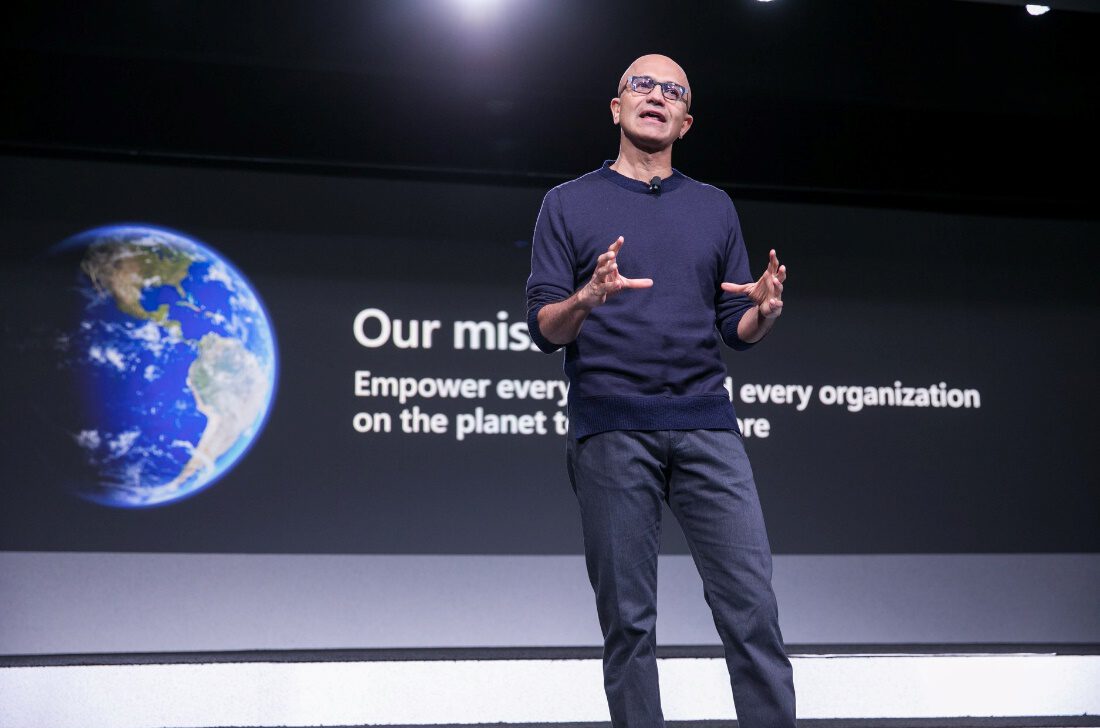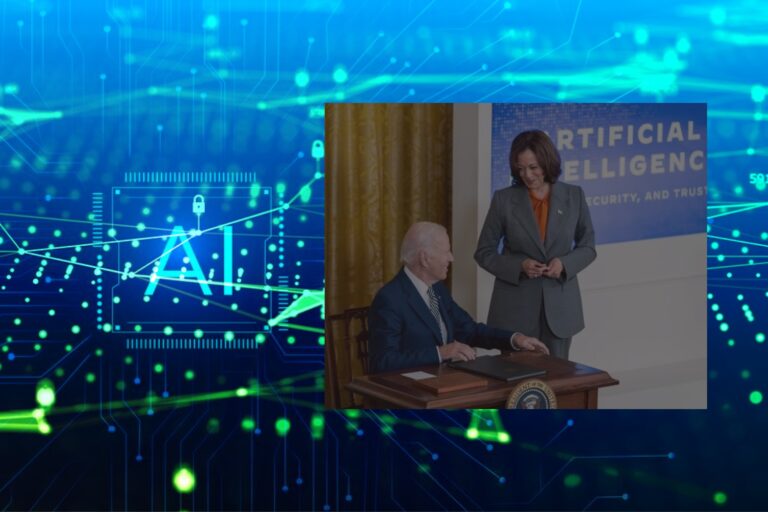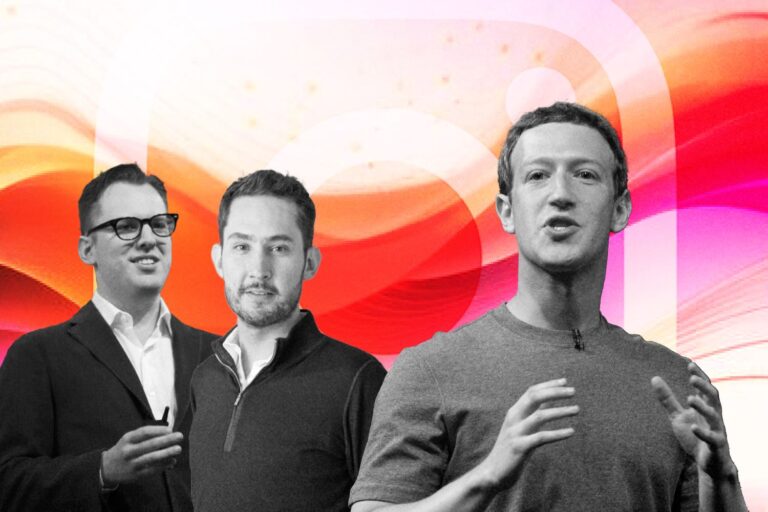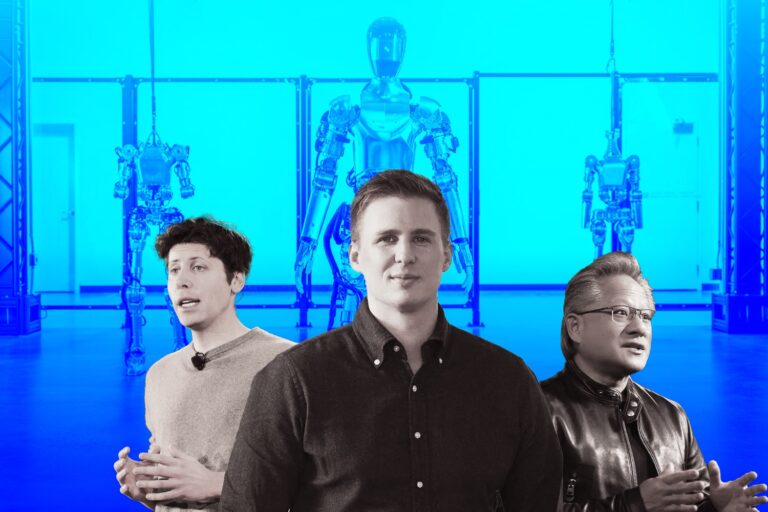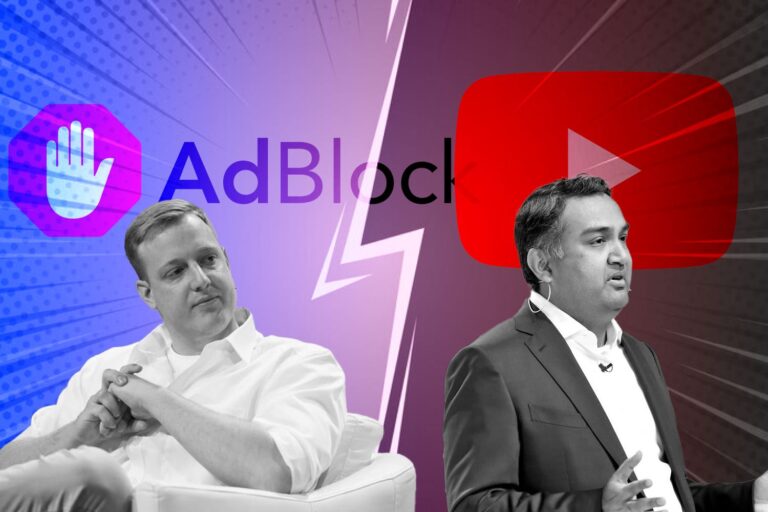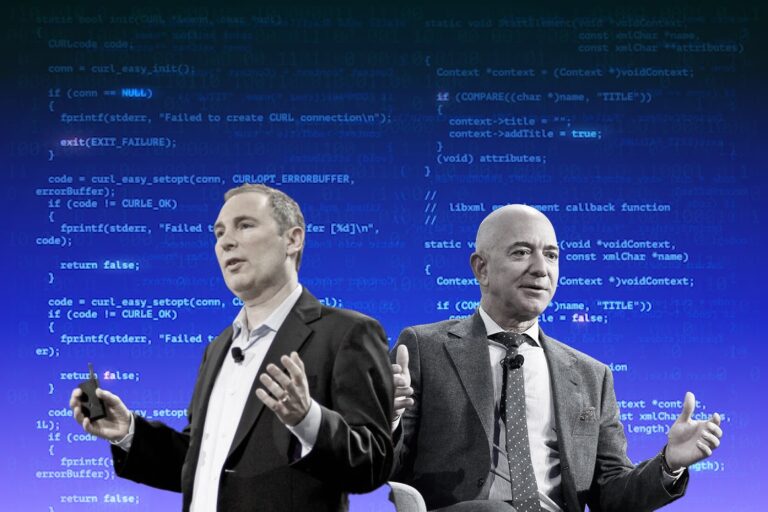The “Shifts” Satya Nadella Made to Revitalize Microsoft Empire
By the end of April, Microsoft records the strongest quarterly growth in years as the company was poised to surpass $2 trillion in market value. The company’s revenue jumped 19% from the year earlier, at $41.7 billion for the third fiscal year while profits surged 44% to $15.5 billion. Despite the pandemic downturn, Microsoft is reaping the fruits out of this global hardship and reassuring its position as one of the most valuable public company.
As this tech giant fortuitously drives through the storm of Covid-19, it’s hard to reflect upon Microsoft’ wither during the Steve Ballmer’s reign and its journey of bouncing back to top. When the company’s current CEO Satya Nadella took over in early 2014, Microsoft was about to complete an ill-fated $7 billion acquisition of Nokia Devices and Services division to revive its lackluster Windows Phone. On top of that, the company received heavy criticism for the release of Window 8 which was once described as “a Frankenstein’s monster of cobbled together parts that are clumsy and impractical.”
The company failed to overtake Apple in the smartphone market, Amazon in the cloud sector, and Google in search. While Microsoft remained profitable, its stock price had been stagnant for more than a decade. When Nadella stepped in, the tech giant was a shadow of its former ’90s glory, and many outsiders questioned if Microsoft will “make it to the other side”.
Seven years later and the transformation under Nadella’s leadership is remarkable. In 2019, the company’s share price tripled what it was in 2014 and topped $1 trillion for the first time. Two years later, with its latest product Window 11 unveiled on June 24, Microsoft ended the trading day with a market cap of over $2 trillion.

So how did Nadella pull it off?
The 51-year-old leader has shifted his company’s direction in significant ways that allowed a comprehensive change from the inside to outside, from the products to the people. In his first email to employees as the CEO of Microsoft, he wrote about the future and emphasized the importance of cloud and mobile for Microsoft’s growth. More importantly, he was ready to take on a new wave of innovation that the old Microsoft failed to succeed “Our industry does not respect tradition – it only respects innovation.” – he wrote. With such vision in mind, Nadella was determined to employ a structural, cultural and strategic transformation throughout his time at Microsoft.
The “Structural Shift”: From Boxed-Software to Global Computing Engine
Microsoft’s decline can be traced back to its obsession with the profits churned out by its PC operating system. Until 2014, Microsoft had five different business areas. Most of the profit came from three of them: Windows, its Office software and programs that operate servers used in data centers and corporate networks. While entertainment and devices, including the Xbox, generated little money, online services such as the Bing search engine and MSN web were a total loss. The company’s relentless efforts to retain Window at the center of everything hampered its engineers from breaking into more lucrative areas.
Nadella reconfigured this structure, holding a vision of “mobile-first, cloud-first” company in mind. Since then, big fishes of Microsoft’s businesses fall into three buckets: cloud, productivity software and business processes, and personal computing. Each contains one of the company’s core products—servers, Office and Windows—alongside lots of others such as Surface PCS and digital whiteboards, or Dynamics business software. Nadella’s game plan was to reorient Microsoft around Azure, which has become the internal computing engine for Microsoft’s applications, as well as a product sold to customers.
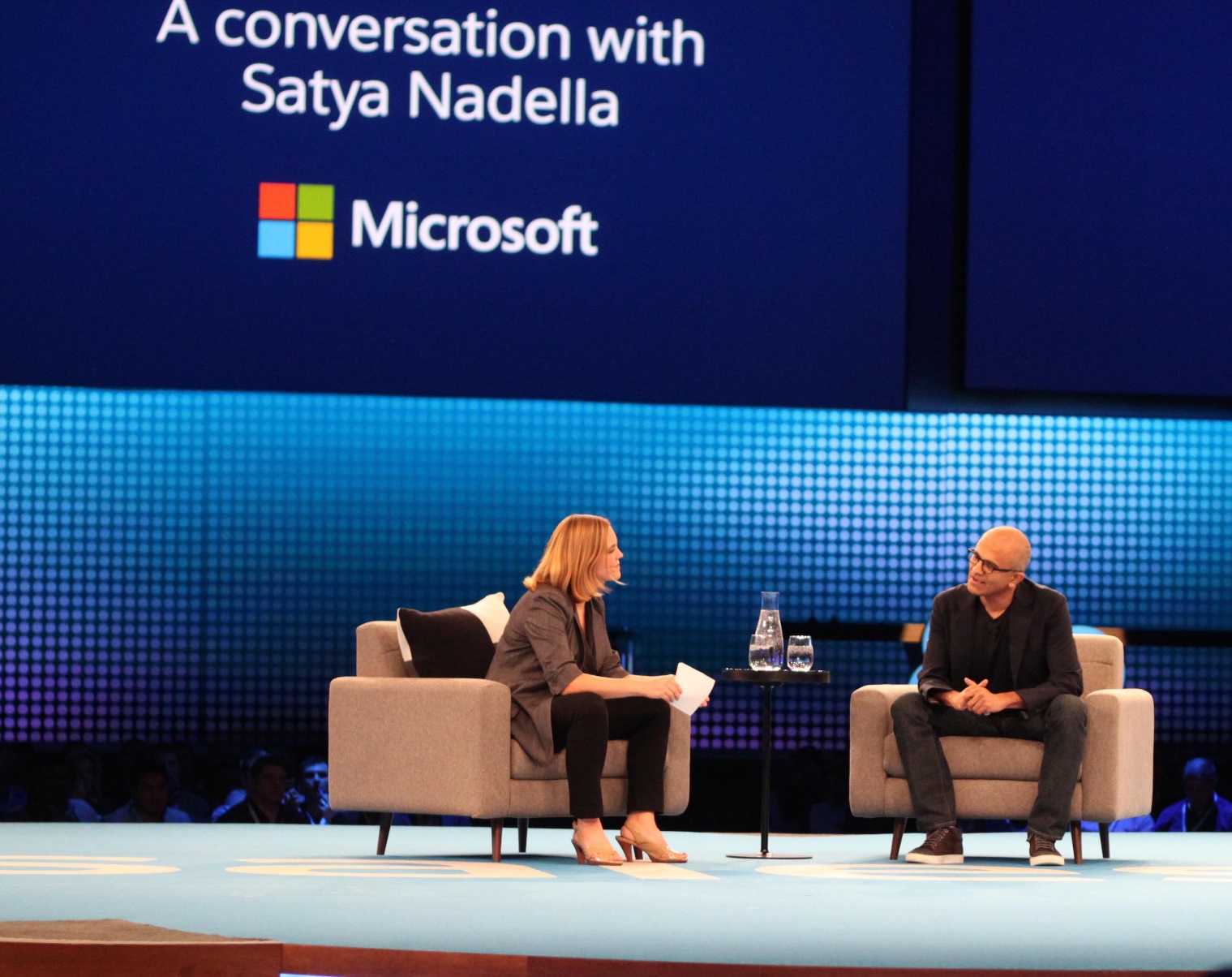
So, how can Nadella enable this shift?
The CEO responded by taking Microsoft back to its roots, looking to a period before Windows when its software tools were used by other companies to build their own technology.
“That fundamental notion that we build tools, build platforms so that others can build more technology, I think is more relevant, more needed in 2019 than it was in 1975,” Nadella says.
Unlike his predecessors who shared strong opposition to open-source software, Nadella embraced it as an opportunity for the company’s trajectory towards its cloud-based future. He invested significantly on open-source software projects, and the corporation released its own software under open-source licenses on a regular basis. While Microsoft is still known for a Windows company, it has embraced open-source Linux in the cloud, Windows 10, and even patent enforcement.
Other than changing its stance on open software, Microsoft also enacted major changes towards its cloud applications. Under Nadella’s helm, the company has shifted from being just another provider of public cloud resources to a top competitor to market-leading Amazon Web Services.
While Microsoft was already engaged in the cloud under Ballmer, Nadella has elevated cloud as a strategic priority and altered sales compensation to ensure customers use Microsoft’s cloud services.
Microsoft’s shift to a more open and collaborative cloud-first strategy under Nadella— backstopped by key sales organization and compensation changes—has fueled customer consumption of Microsoft’s Azure cloud computing services and its cloud-based Microsoft 365 productivity and Dynamics 365 business application lines. Nadella’s critical moves have resulted in No. 2 Azure narrowing the market-share lead held by Amazon Web Services (AWS). By the end of 2019, Microsoft has won the sought-after JEDI cloud computing contract, which the Pentagon valued at as much as $10 billion over a decade, dealing a blow to the market leader, Amazon, which had been the front-runner.
The Strategy Shift: Embrace a Partner-Positive Approach
While Amazon’s cloud business continues to compete with some customers, Microsoft has tried to make itself out to be less of a threat and more of a collaborative partner.
At the WSJD Live conference in 2016, Nadella admitted: “We clearly missed the mobile phone, there’s no question,” conceding that Microsoft’s best bet wasn’t in competing against the likes of Apple and Samsung with the Windows Phone. Since then, Microsoft has refocused its efforts to get Windows-owned apps onto Android and iOS systems. Notably, Nadella also discarded Microsoft’s aggressive strategy towards rivals and has embraced cooperative working with partners.
Satya realized that if they didn’t partner, they wouldn’t grow. This partner-positive thinking is what organizations need to take on for further advance. It’s predicated on the understanding that fast-growing, specialized partners can provide the kind of expertise and innovation that a larger, legacy firm could struggle to satisfy. Agencies and consultancies are often hired as a means of outsourcing part of their value chain or completing a discrete project, but collaboration should go beyond this. For example, Nadella listed Linux distributions in the Windows Store to enable access for developers. In 2017, Microsoft was the world’s biggest open-source code contributor. Through its openness to introducing new partners, it has established itself as the biggest player in this field. To add to this remarkable achievement Microsoft beat competitor Google in acquiring open-source platform GitHub for $7.5 billion.
Nadella has been instrumental in unlocking the power of Microsoft across cloud, software and consumer technology by betting tech is not a “zero-sum game,” said Hyoun Park, CEO and principal analyst at Amalgam Insights, a Berkeley, Calif., technology consulting firm.
“Although Microsoft definitely wants to win business, they don’t have a ‘win-at-all-costs’ mentality that is more associated with the likes of Oracle or Amazon,” Park said. “Microsoft is more likely to invest in areas where a rising tide floats all boats, and Microsoft can focus on executing on its own vision.”
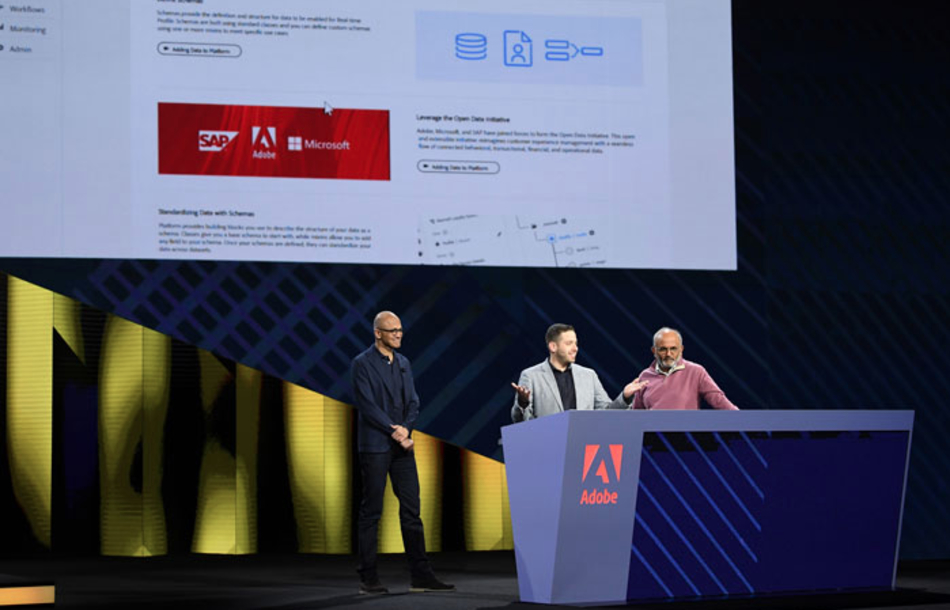
The Microsoft’ CEO also cultivated relationships with several of the company’s former competitors. Some of them were a pivotal collaboration between Microsoft Azure and IBM in 2014, a landmark integration with Salesforce in 2015, and a very smart, strategic integration between Office 365 and Dropbox in 2016
“What I think is unique about the way we approach our business, our business model and the partner ecosystem is we fundamentally wouldn’t exist as a company if not for the partner ecosystem taking what we build, adding value to it and then, most importantly, jointly being as obsessed about how do the outcomes of it help the world get better one business at a time, one community at a time,” Nadella said. He wasn’t just changing Microsoft’s culture from the inside out. Satya was also challenging people’s perceptions of Microsoft as a company and forging crucial links between his firm and many of its old enemies.
“One of the things that I feel the most-proud of as a company is when you go drop yourself anywhere on the planet, there will be a Microsoft partner ecosystem,” Nadella said. “And for the most part, if you say what is the software industry of that country or that region, it’s essentially these partners. In 2021, that is more needed—that is, that ecosystem building, that ability to take digital technologies and democratize their access across industries, across first-line and knowledge work.
The Culture Shift: To Learn and Collaborate
For what’s worth noting, it’s how Nadella has revived the company’s culture from an inflexible, rigid chunks of regulations to an open-minded, collaborative environment that constantly strives for renovation.
He has promoted a new outlook for Microsoft workers, based on a “growth mind-set” that would involve constantly being open to learning and new ideas, rather than the “fixed mind-set” of the past — concepts taken from psychologist Carol Dweck. And he worked to break down silos, instead championing a “One Microsoft” approach that would unify the company.
“In the old days, this was the most internally competitive culture I have ever seen — everyone was fighting for their lives,” says Margaret Heffernan, a software entrepreneur who has worked on management issues at Microsoft. “The culture has changed radically.”
And despite all the breakthroughs this CEO made since his first day, Nadella would not let the achievements swell his ego. His mantra of working is “When everybody’s celebrating you is when you should be most scared.” He believes that everyone – from children to Microsoft employees, to CEOs — needs to be open-minded if they want to succeed. “I need to be able to walk out of here this evening and say, “Where was I too closed-minded, or where did I not show the right kind of attitude of growth in my own mind?” If I can get it right, then we’re well on our way to having the culture we aspire to.”
For Microsoft, a company whose philosophy was once so fixed that it could be summed up as “everything has to be on Windows and God forbid we do something that works well on another platform”, Nadella’s push for an endless exploration and improvement breaths a new life into the company.
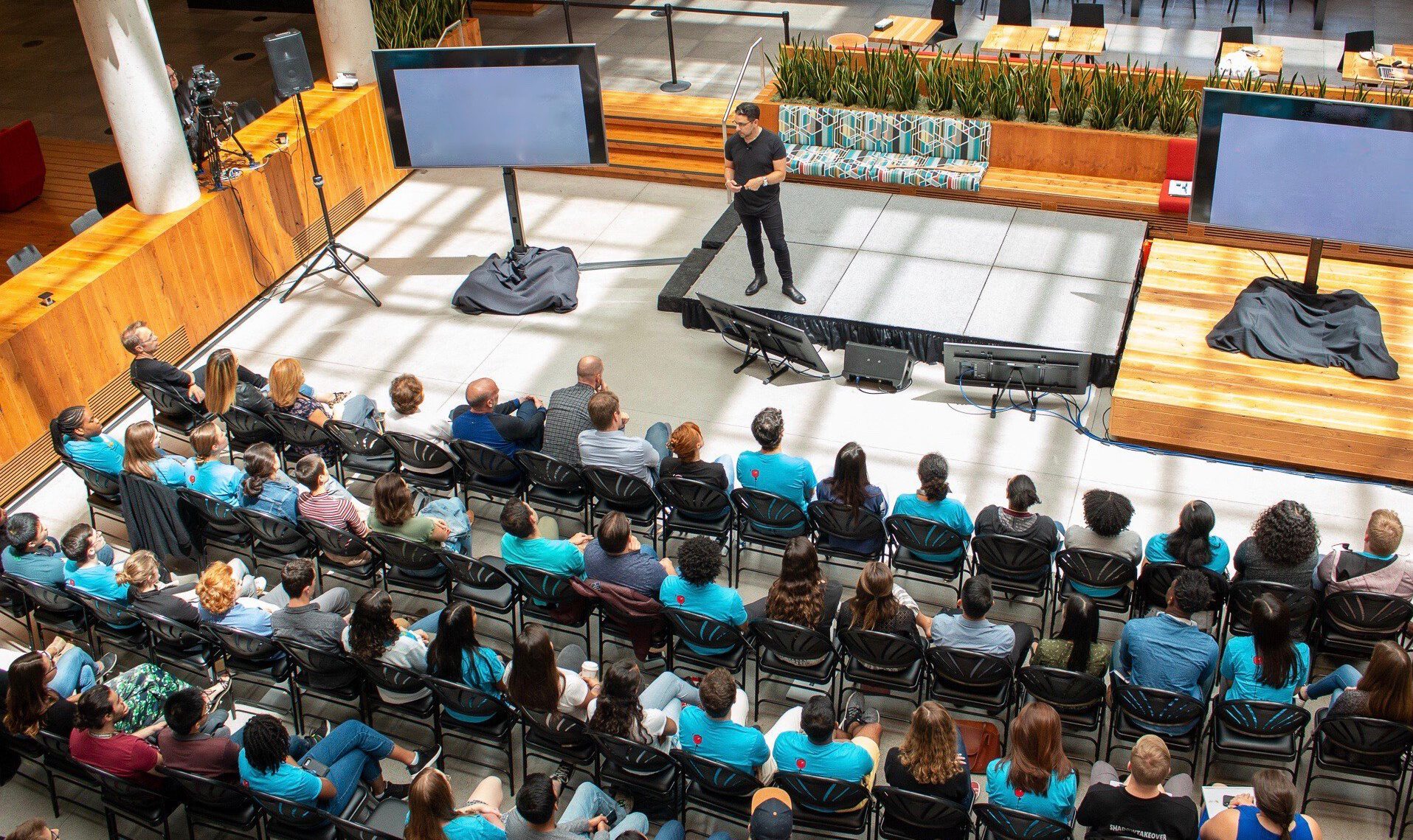
Another key transformation that Nadella made was to replace the brutal corporate politics in the company with a more collaborative, motivating environment. Following Ballmer’s resignation as CEO, Satya removed outdated and counterproductive management structures, which were rife within the unwieldy organization. Prior to throwing the system out in 2013, managers at Microsoft were encouraged to assign a certain number of negative performance reviews. In other words, managers were forced to give negative reviews to employees, even if they didn’t deserve them.
Nadella built on the change in management structures by creating a more collaborative work environment, as shown with the creation of the annual Microsoft Hackathon, which the company calls the “largest private hackathon in the world.” The hackathon encouraged employees from different areas of the business to work together on projects. Before the hackathon, separate Windows offices were siloed and in constant competition with one another. The hackathon helped create the kind of fast-moving, collaborative organization needed to compete in today’s digital-first world.
“One of the big things that we have done at the leadership level is to focus on shared metrics. We make a distinction between what we call ‘performance metrics’ and ‘power metrics’,” said Nadella.
He was also disheartened to discover how little time each manager spent coaching his people and made this one of his biggest priorities as part of Microsoft’s cultural renaissance. Speak with Wael El Kabbany, Microsoft’s managing director for Enterprise Middle East and Africa, or read the interviews by Kathleen Hogan, his chief people officer, and you hear the same message. “At Microsoft, we are committed to building leaders by unlocking their potential and by empowering them.”
Wael explained how the primary focus for all Microsoft managers today is to Model, Coach and Care to best support their teams and create an environment where employees are empowered to do their best work.
Leaders across the company must now show they personally practice the growth mindset with three skills in particular: active role modelling, coaching their employees to be active role models, and showing they care about their employees and their personal growth. They have a well-designed coaching program that places the onus on each leader to coach his teams and ensure the same is cascaded down the line. This new leadership philosophy begins with revising the role of a manager at Microsoft.
The Bottom Line
In his book, Hit Refresh, Nadella explains the secrets behind his strategic and cultural transformation of Microsoft. He writes that the trick to any transformational program is to replicate how a browser refreshes a page. He takes this beyond an organizational level – advocating for a transformational attitude from structures, strategies to culture to bring back Microsoft’s power.
Microsoft’s recent earnings success, and its turnaround, should be an example for any business’s transformational program. Quietly and intelligently, Nadella has transformed Microsoft into a company that’s fully geared to compete in the 21st century.

